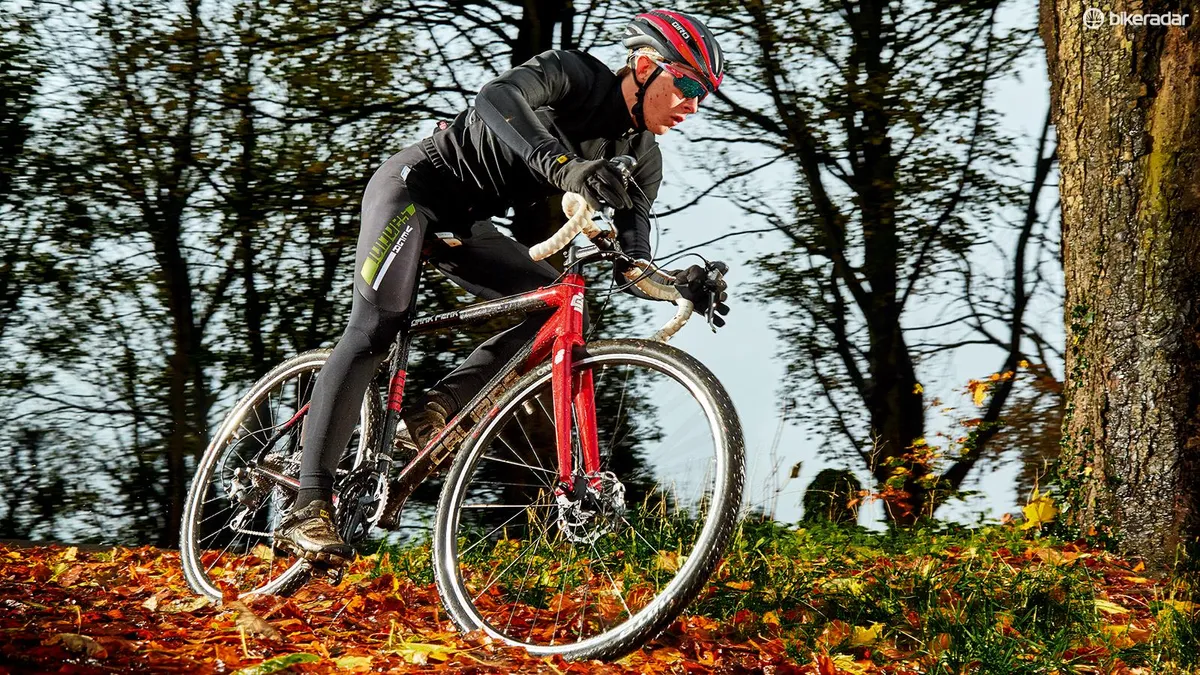We all know this person and, if we’re being honest, we all resent them. It's the person who never appears to do any training but, when they turn up to ride, cruises effortlessly up climbs and, more annoyingly, feigns complete surprise at their ability.
Don’t be fooled, though. They have been training. But they've been training smart, training subtly and training with stealth. Here's how you can do the same...
1. Never take the elevator or escalator
Climbing stairs uses similar muscle groups to riding, and can significantly increase your daily calorie expenditure. Jogging up stairs or taking two at a time is even better. According to a study at the UK's Birmingham University, seven minutes a day climbing stairs can decrease your risk of coronary heart disease by almost two-thirds.
2. Do press-ups
An ‘old-skool’ exercise, but this is the perfect upper body and core tonic for cyclists that can be done secretly at home. Head trainer Ayo Williams from Matt Roberts Personal Training says: “Chest, shoulder and arm strength can make all the difference on a long out-of-the-saddle climb, and greater core strength can mean a more powerful pedal stroke and less lower back pain.” Set yourself the challenge of 100 consecutive press-ups in six weeks.
3. Use your commuting to train
If you ride to or from work, fit in some secret quality training. Find a route that extends your commute to about 40 minutes. After 10 minutes of easy spinning, ride as hard but consistently as you can for 20 minutes. Cruise in for the final 10 minutes to cool down.
This will give you a quality ‘sweetspot’ interval. Hunter Allen, coach and author of Training and Racing with a Power Meter, says: “The sweetspot is sweet because it’s the zone where you’ll get the greatest return on your investment. We all have limited time to train and want to use it wisely.”
4. Cut out the caffeine…
… until you need it. A meta-analysis of over 32 individual studies performed by the University of Auckland in New Zealand found that by abstaining from caffeine for seven days and then taking 6mg/kg of body weight one or two hours before an event, power output increased by as much as 3.5 percent. Even better news for coffee addicts is that just abstaining for two days gave a power increase of three percent.
5. Pre-breakfast training
Getting out for a surreptitious 30- or 60-minute easy-paced ride before breakfast is an excellent way to control your weight, enhance your ability to burn fat as a fuel and improve your riding economy. So-called ‘bonk training’ is a tried and tested method.
Dr Andy Pruitt, clinical director of the Boulder Center for Sports Medicine in Colorado, has seen plenty of cyclists shed their guts doing it: “If I have a cyclist who’s trying to lose weight, I have him ride for 20 to 30 minutes before breakfast at about 60 percent max heart rate. This ignites fat-burning metabolism, and it stays lit during the day. If you have an extra 5-10lb to lose, empty-stomach exercise first thing in the morning is ideal.”
6. Go for an off-road hilly run
By hammering the hills, you can improve your ability to recover from a hard effort. Nick Craig, Olympic road and mountain bike rider, and multiple national champion in both mountain biking and cyclo-cross, says hill running is a regular part of his training: “Uphill running uses similar muscles to cycling. If you’re short of time, a 30-minute run can be a great workout. Be careful, though – if your legs aren’t conditioned to the downhill you’ll wake up sore the next day.”

7. Sit on a stability ball
You might get some funny looks in the office, but sitting on a Swiss/stability ball while working will improve both your posture and your fitness. Top sports physio Tim Deykin says: “Although they are to all intents and purposes sitting still, most people do tend to move the load forwards and backwards through the pelvis, and side to side through the ischial tuberosities – they are the sit-on bones that touch the bike saddle.
The key is to experiment with a variation in pressures of air in the ball so it’s not so hard that it’s very stable, and not so low that you sink into it like a bean bag. The other benefit is that you’re consciously occupied with your work and not the task of balancing, so it offers a higher level of rehabilitation and training potential, as this work has to be managed by the sub-conscious.”
8. Recovery is key
What you do in the privacy of your own home after a ride can have as much impact on your fitness as what you did during it. Make sure you have a recovery drink pre-made, spend 10-20 minutes with your legs elevated and put on a pair of compression tights. The pros riding multi-day stage races know this better than anyone. Lance Armstrong is quoted as saying: “Recovery. That’s the name of the game in cycling. Whoever recovers the fastest does the best.”
9. Sneak in some stretching
Make the most of time alone spent in front of the TV by doing some long-hold sustained stretching. Tim Deykin again: “Some of the top cyclists I worked with really got into the deep release you can achieve by holding, breathing into and developing a stretch for five to 10 minutes.”
10. Make life hard
When you do train on your own, do so on your old heavy winter bike, slow tyres and full water bottles. Save your best bike and lightweight kit for your big race or when you want to see your mates grimace. You’ll feel like you’re flying! Famed Russian General Suvorov had the right idea: “Hard training, easy combat; easy training, hard combat.”

